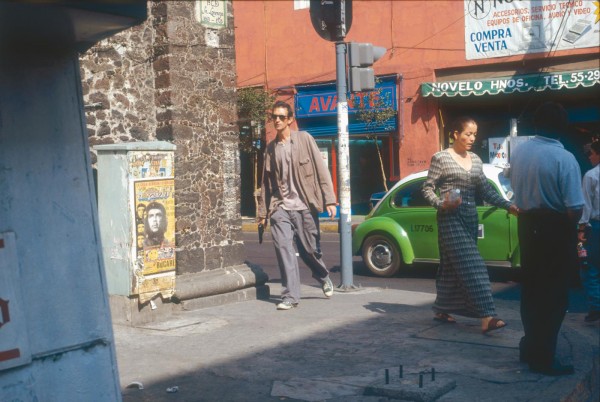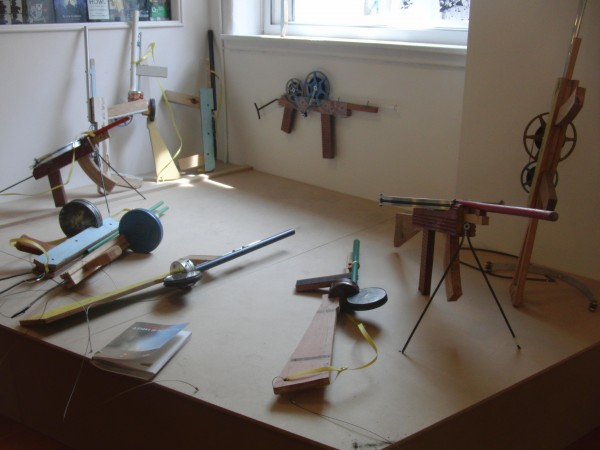MoMA PS1, 22-25 Jackson Ave. at 46th Ave.
Thursday – Monday through September 12, suggested admission $10 (free with MoMA admission tickets within thirty days)
718-784-2084
www.ps1.org
Museum of Modern Art, West 54th St. between Fifth & Sixth Aves.
Daily through August 1, $20 (free Fridays 6:00 – 9:00)
212-708-9400
www.moma.org
Nine years ago, Belgian-born Mexico City multidisciplinary artist Francis Alÿs led a procession from MoMA’s Midtown home to its temporary headquarters in Queens, kicking off the institution’s renovation and expansion. Now Alÿs is back, with a dual exhibition at the Museum of Modern Art’s two locations, on West 54th St. in Manhattan and at PS1 in Long Island City, once again directly linking the two buildings. “Francis Alÿs: A Story of Deception,” which continues at MoMA through August 1 and PS1 through September 12, consists of video, installation, sculpture, painting, drawing, photography, and performance from the innovative Alÿs, who is best known for staging conceptual events that confront sociopolitical and economic conditions around the world. As serious and confrontational as much of his work is, tackling such subjects as homelessness, modernization, capitalism, war, climate change, immigration, poverty, crime, governmental authority, and individual and personal freedom, however, Alÿs’s performances are also often just plain fun to watch. “The poetic qualities of Alÿs’s projects reside in their fantastical absurdity, their transience or incompletion, their imaginative imagery, and most of all in their enigmatic openness to interpretation,” Mark Godfrey explains in his essay in the excellent exhibition catalog. At MoMA, “Re-enactments” is a two-channel video in which Alÿs purchases a 9mm Beretta and walks through the streets of Mexico City — for quite a while — until the police arrest him; one monitor captures the action live, while the other shows it being re-enacted, blurring the line between fact and fiction and questioning the very nature of documentary. In “Paradox of Praxis 1 (Sometimes Doing Something Leads to Nothing),” Alÿs pushes a large block of ice around Mexico City until it melts, emphasizing a similar type of futility evident in “When Faith Moves Mountains,” which involves five hundred mostly student volunteers with shovels displacing ten centimeters of a sand dune. Alÿs’s theme of “Maximum effort, minimum result” can also be seen in “Rehearsal I (El Ensayo),” as a red VW Beetle heads up a steep dirt road outside of Tijuana, moving forward while a brass band on the soundtrack plays, but every time the band pauses or stops, the driver takes his foot off the gas, sending it back down the hill. Every forward step of progress is followed by two steps back.
The works at PS1 have similar themes but different endings that comment on the limits of success. In the sensational “Guards,” one of the longest videos in the exhibition at thirty minutes, sixty-four Coldstream Guards, in their Beefeater-like uniforms, traverse the streets of London on their own, joining up with other guards when they see them, marching in step until they are finally all together, in formation, heading to a bridge, where it all devolves into chaos. In “Duett,” a tuba is broken down into two parts, each given to a man who goes off in different directions in Venice, then wander through the city until they find each other, put the instrument back together, and one plays a single note for as long as he can hold his breath while the other claps for as long as he can hold his, a sort of competition between performer and audience, action and reaction. Scattered throughout PS1 are nine monitors that comprise “Choques,” a depiction of a man falling over a dog, seen from nine different angles but still impossible to figure out exactly what happened. As at MoMA, the video projects are accompanied by detailed notes, sketches, and explanations about their derivation and execution. Both museums also feature numerous small-scale oil paintings, including the continually reworked and rather charming palimpsests “La Temps du sommeil,” that further Alÿs’s exploration of change and action. In many ways, “Francis Alÿs: A Story of Deception” can be best summarized by the series of camguns in the PS1 café, a group of wooden rifles that incorporate found film reels instead of bullet chambers, evoking the artist’s confrontational nature, attacking subjects through film but in this case allowing visitors to pick up the “weapons,” making them active participants. Collaborating with Olivier Debroise, Rafael Ortega, Julien Devaux, Artangel, and Cuauhtémoc Medina, Alÿs provides an engaging, at times incomprehensible, but most often exhilarating challenge to the audience, the status quo, and contemporary reality itself through his thought-provoking, provocative works.

